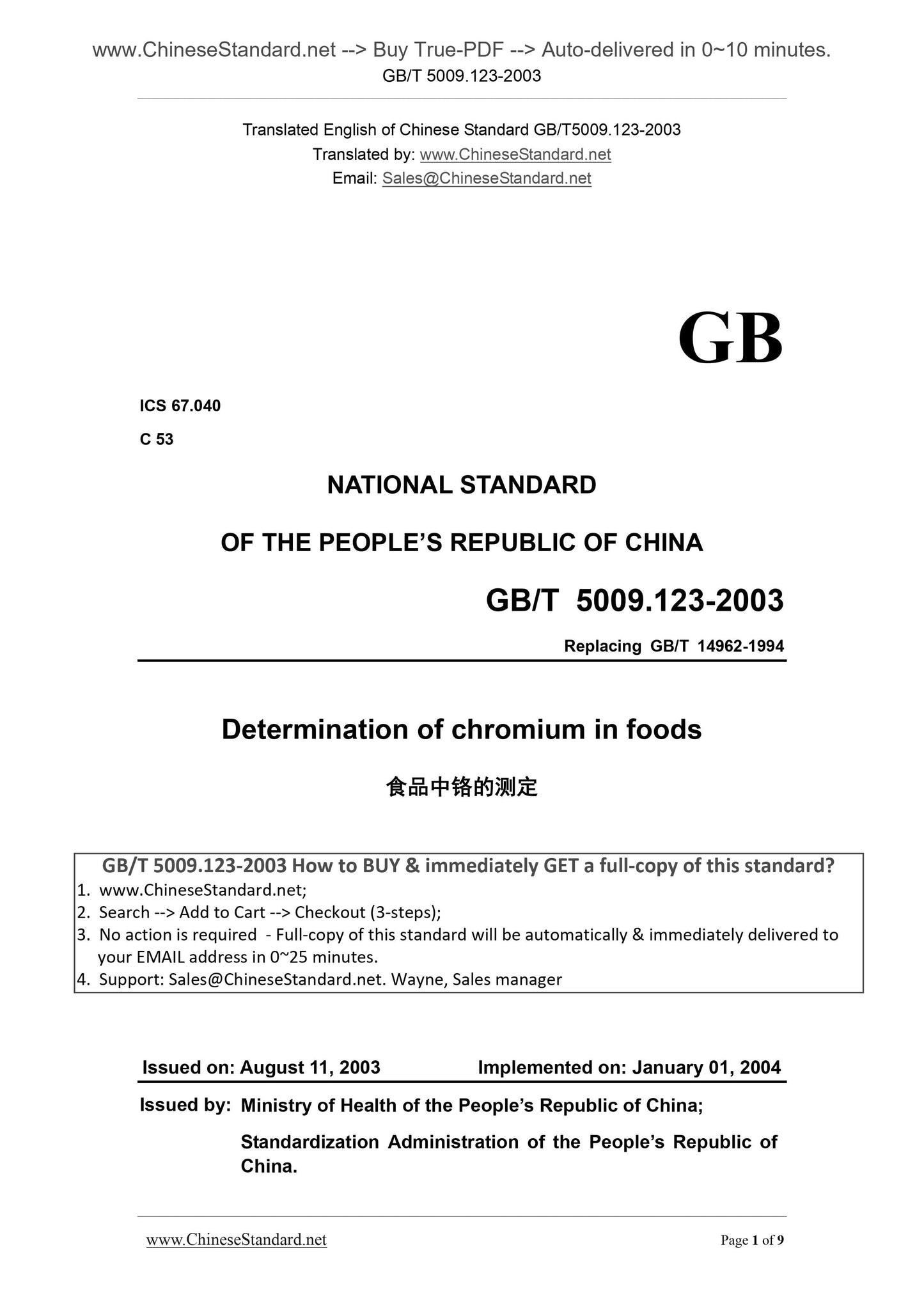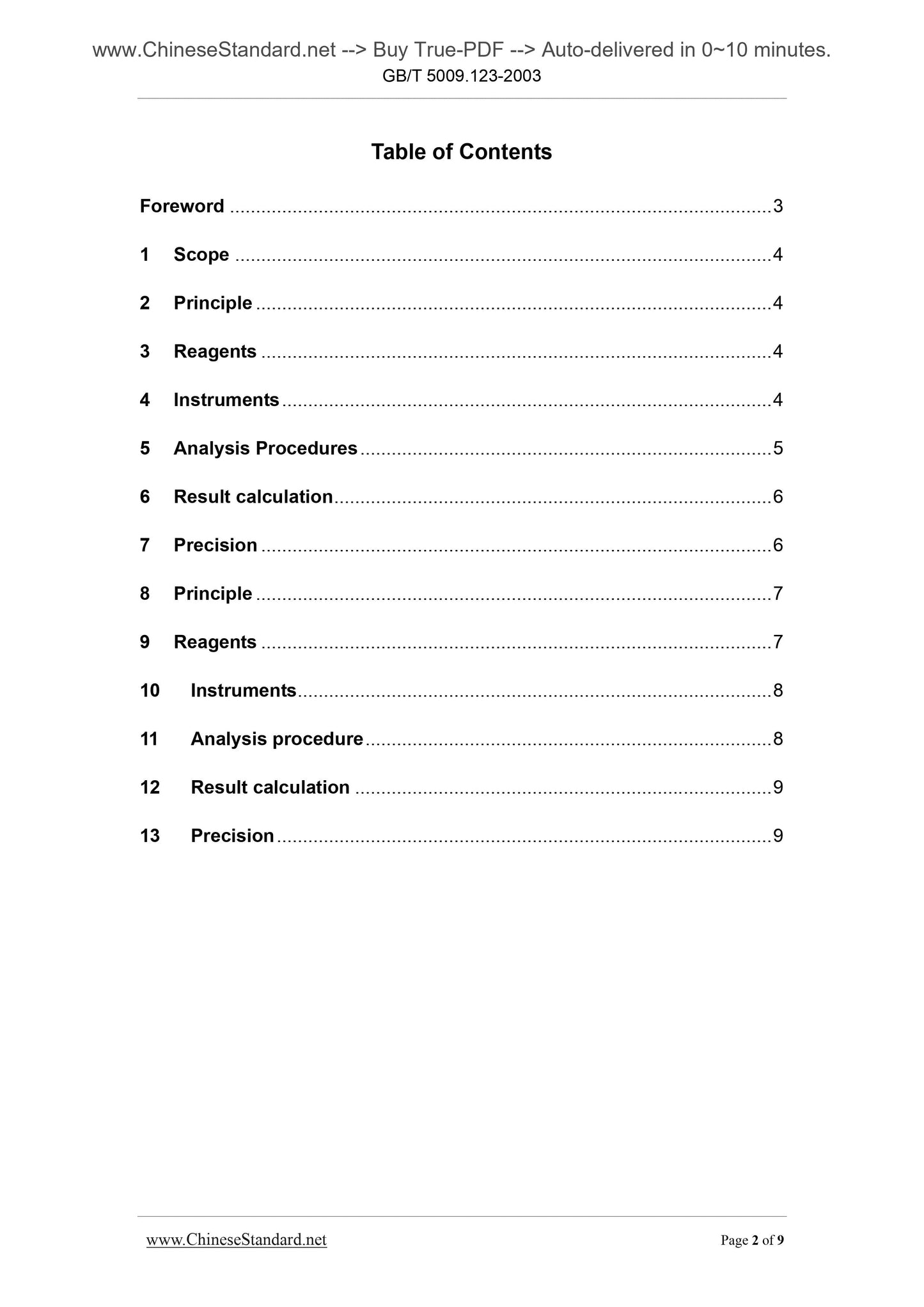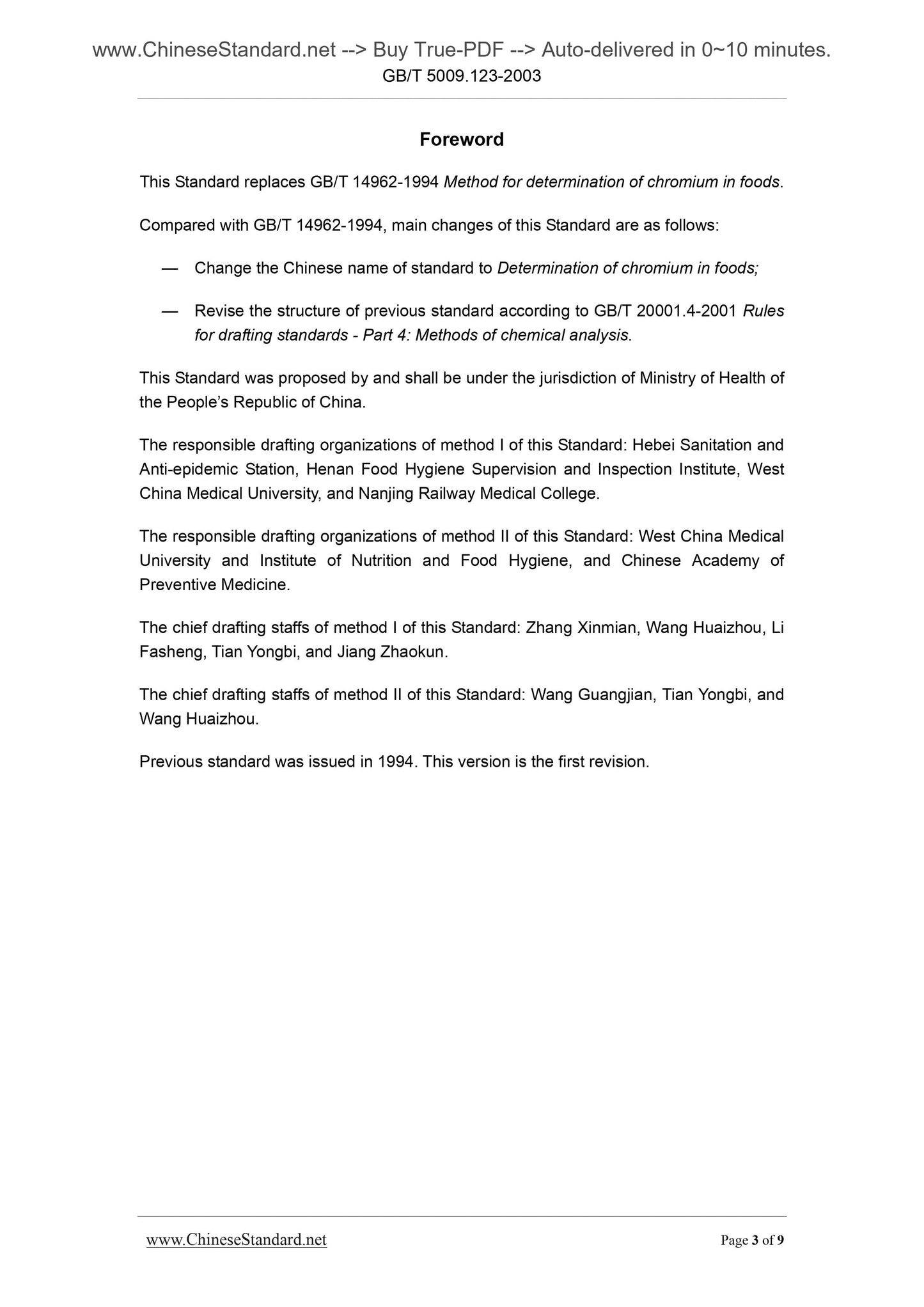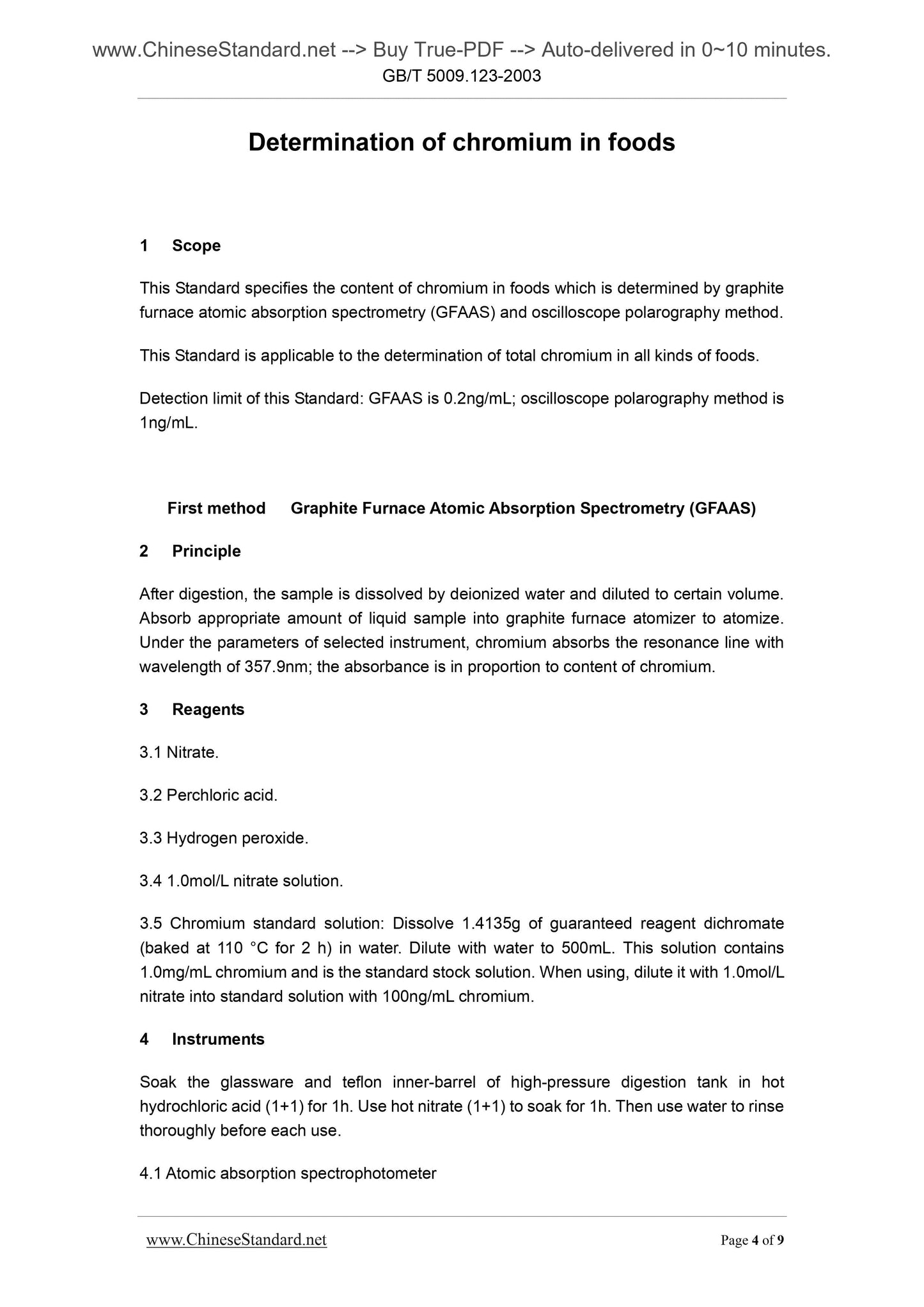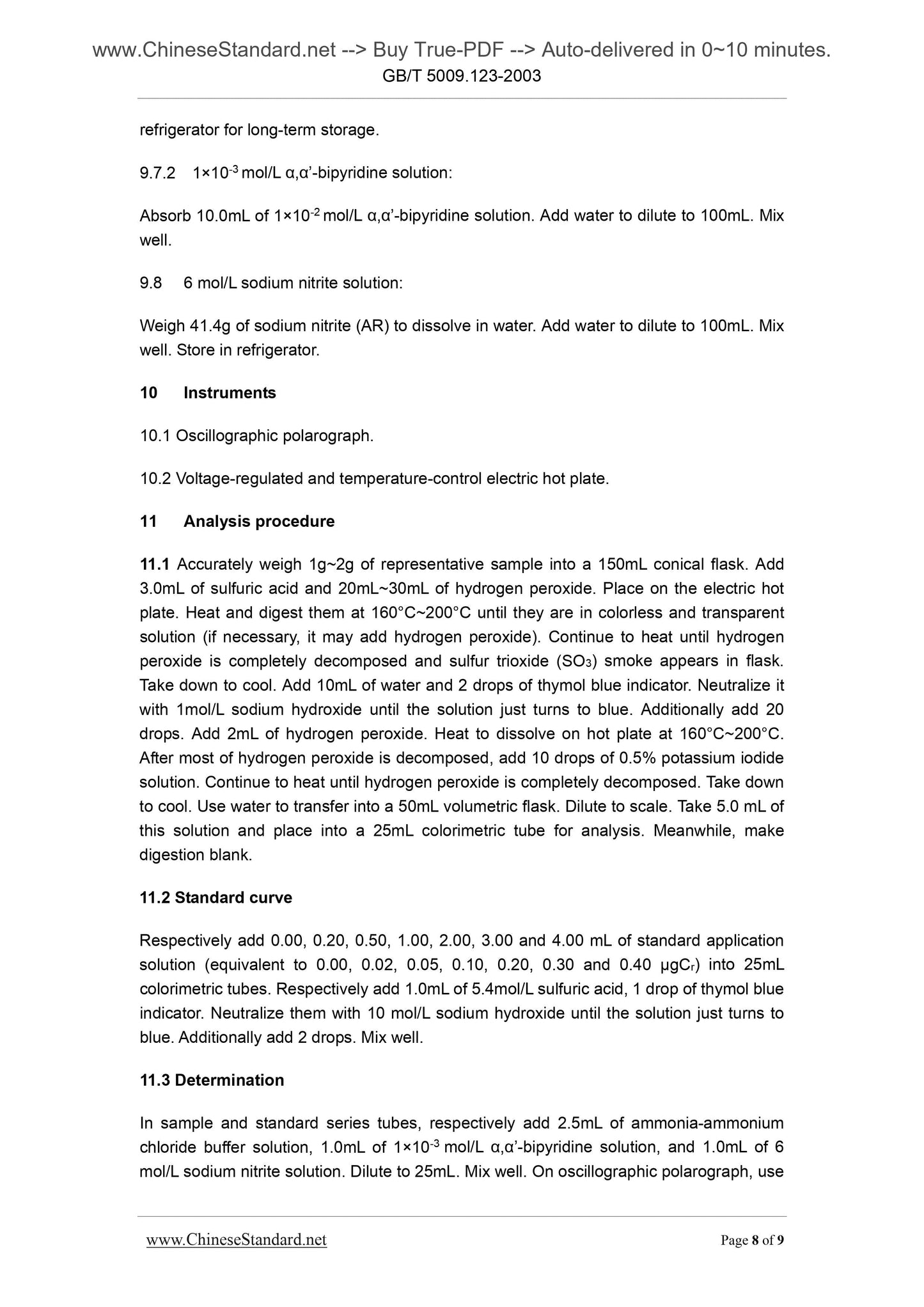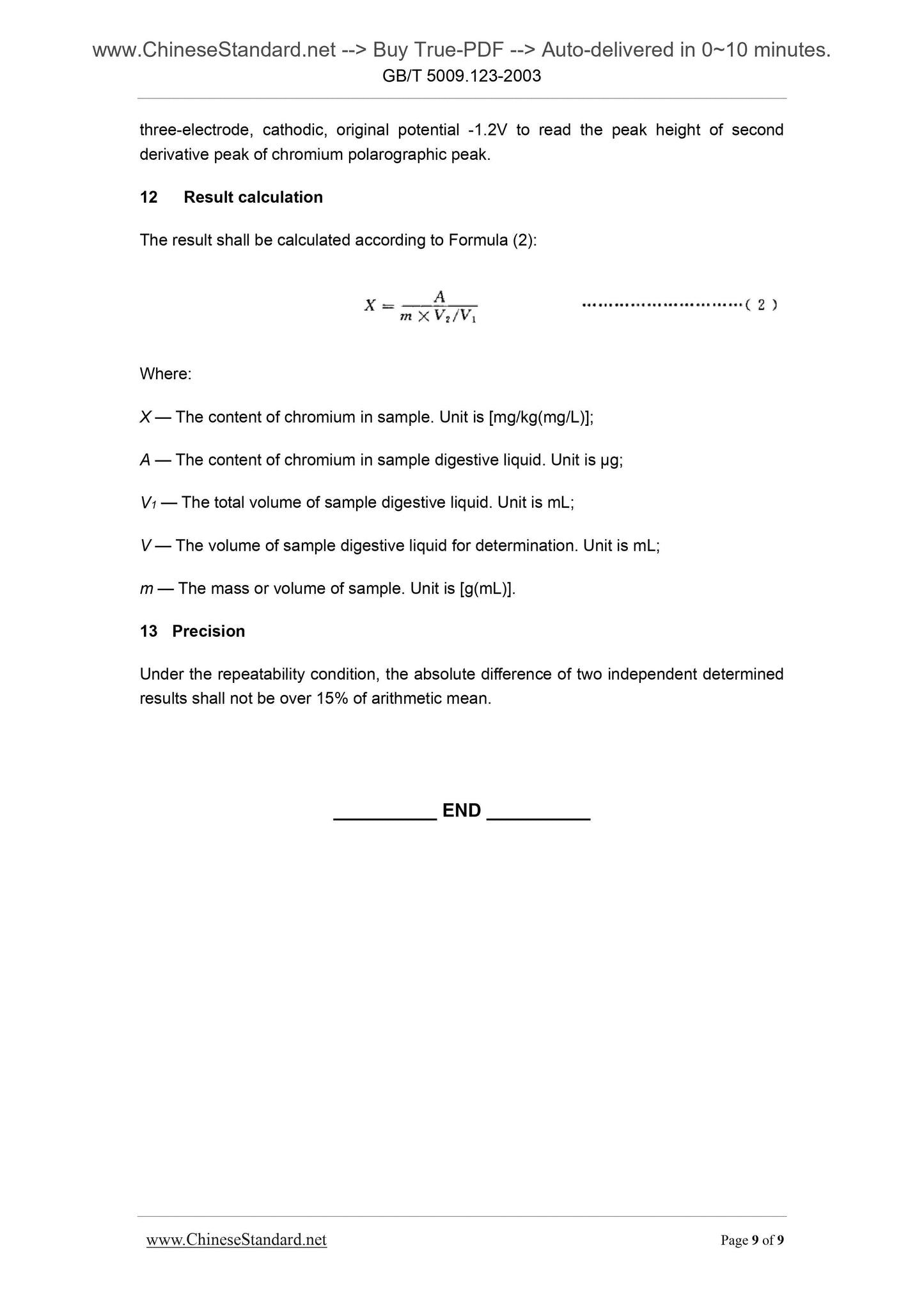1
/
of
6
PayPal, credit cards. Download editable-PDF and invoice in 1 second!
GB/T 5009.123-2003 English PDF (GB/T5009.123-2003)
GB/T 5009.123-2003 English PDF (GB/T5009.123-2003)
Regular price
$70.00
Regular price
Sale price
$70.00
Unit price
/
per
Shipping calculated at checkout.
Couldn't load pickup availability
GB/T 5009.123-2003: Determination of chromium in foods
Delivery: 9 seconds. Download (and Email) true-PDF + Invoice.Get Quotation: Click GB/T 5009.123-2003 (Self-service in 1-minute)
Newer / historical versions: GB/T 5009.123-2003
Preview True-PDF
Scope
This Standard specifies the content of chromium in foods which is determined by graphitefurnace atomic absorption spectrometry (GFAAS) and oscilloscope polarography method.
This Standard is applicable to the determination of total chromium in all kinds of foods.
Detection limit of this Standard. GFAAS is 0.2ng/mL; oscilloscope polarography method is
1ng/mL.
First method Graphite Furnace Atomic Absorption Spectrometry (GFAAS)
Basic Data
| Standard ID | GB/T 5009.123-2003 (GB/T5009.123-2003) |
| Description (Translated English) | Determination of chromium in foods |
| Sector / Industry | National Standard (Recommended) |
| Classification of Chinese Standard | C53 |
| Classification of International Standard | 67.040 |
| Word Count Estimation | 6,613 |
| Date of Issue | 2003-08-11 |
| Date of Implementation | 2004-01-01 |
| Older Standard (superseded by this standard) | GB/T 14962-1994 |
| Issuing agency(ies) | The People Republic of China Ministry of Health, China National Standardization Management Committee |
| Summary | This standard specifies: Determination of total chromium in foods and graphite furnace atomic absorption polarography content. This standard applies to: all kinds of food in the total chromium determination. The standard detection limit |
Share
